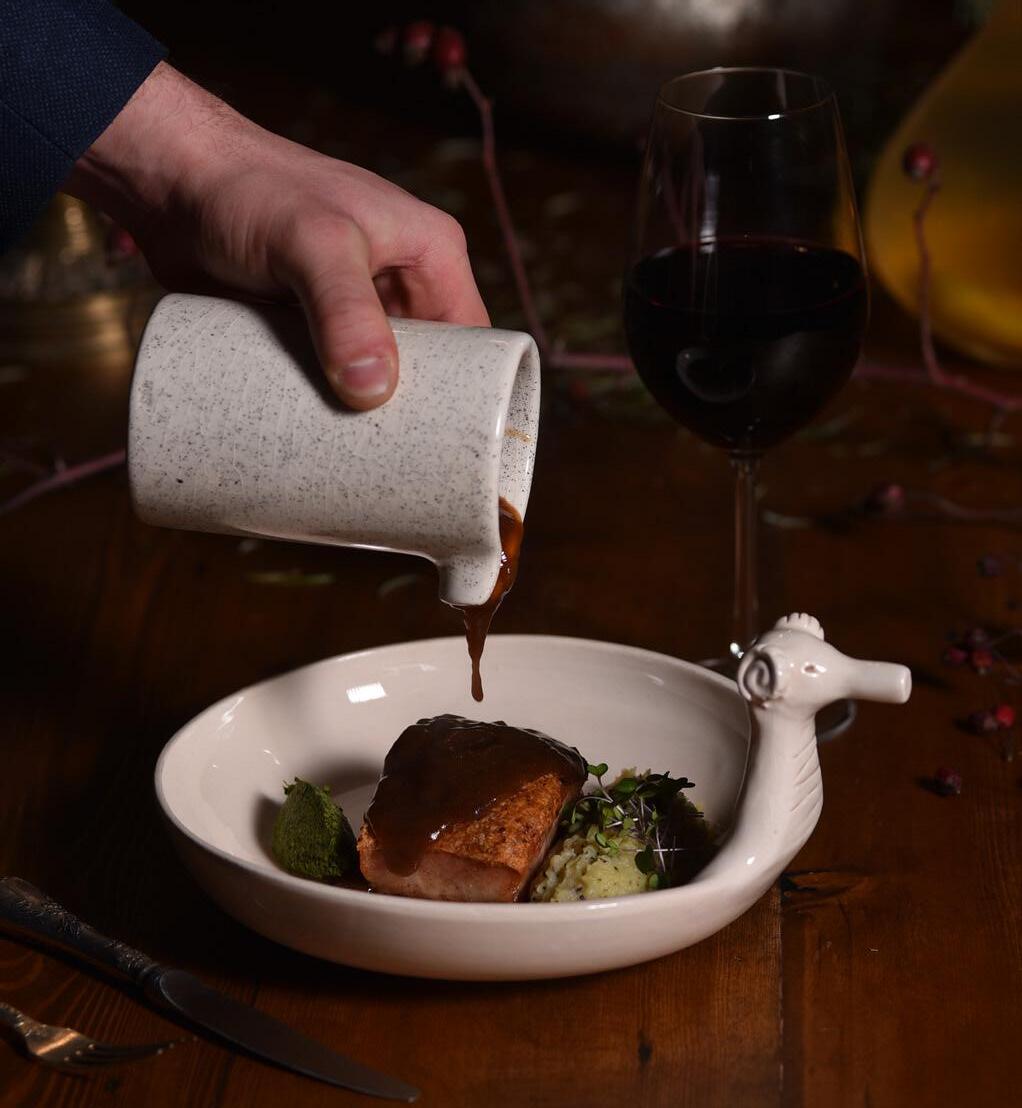
2 minute read
Make Me a Match
Indigenous Varietals, Indigenous Cuisine
As the wine world not only returns to but is seeking out indigenous varietals, it stands to reason there will be a similar return to traditional pairings which reflect a unison of vine and food rooted in an authentic taste of place. We asked two sommeliers from countries with ancient traditions of winemaking to provide their recommendations for indigenous food and wine pairings.
The Sommelier: Jaba Dzimistarishvili
The Varietal: Saperavi
The Pairing: Kakhetian Pork Lagaza with Berry Demi-glace as prepared by Chef Levan Kobiashvili

About the Varietal
In Georgia, there are some 525 indigenous grape varieties, of which 60 per cent are white, and 40 per cent are red. Saperavi, which literally translates to ‘giving colour’ stands out among the red grape varieties as it is one of the few varietals whose pigment / anthocyanins are found not only in the skins, but also inside the grape. The grape is responsible for wines produced in some famous appellations including Mukuzan, Kashmi Saperavi, Kvareli for dry wines and Akhasheni and Kindzmarauli in the case of semi-sweet wines.
When made into dry red wines, Saperavi has an amazing aging potential and delivers aromas and flavours reminiscent of blackberry, black plum, cherry, and black pepper. It can also be aged either in oak barrel or Qvevri.
About the Pairing:
No matter, the aging vessel we get a wonderfully gastronomic wine that pairs perfectly with Georgian cuisine. Since Saperavi is considered to be a Kakhetian grape variety, I chose to pair wines made from the varietal with Kakhetian cuisine, which offers a wide selection of meat dishes.
Lagaza, a Kakhetian pig breed, is fed forest acorns, which provides the meat a unique taste. To prepare this dish, Chef Levan Kobiashvili roasts lagaza piglets and seasons the meat, which is soft and tender, with a berry and demi-glace sauce, spiced with cinnamon and star anise. Accompanying the dish are mashed potatoes mixed with Kakhetian truffles, and Gurian adjika (a west Georgian sauce made of nuts and green peppers) which brings with it a gentle heat.
A perfect pairing for this dish is created when it is served with a Saperavi wine made using the traditional method which means it is fermented on the chacha (pomace) and held in Qvevri for 6 months. Saperavi’s tannins will perfectly neutralise the fattiness of the pork. The varietal’s flavours are also intensified by the berry sauce and the truffle garnish gently presents itself. Lovers of spicy food will enjoy Gurian adjika as the aroma of black pepper, characteristic of Saperavi, together with adjika creates a culinary firework in the mouth.
The Sommelier:
Sotiris Neophytidis

The Varietal: Promara
The Pairing: Sautéed Asparagus with Egg and Tomato
About the Varietal
Let's be honest when someone hears Cyprus, in terms of wine, the first thing that comes to their mind is Commandaria that is made from Xynisteri and Mavro. These two grape varieties are the most planted on the island.
However, one of the upcoming white grape varieties worth noting is Promara. Promara is a thick-skinned white grape variety and as its name suggests is the grape that ripens the earliest in Cyprus. As such a lot of care is required to maintain its acid structure. It only currently occupies about one per cent of total vineyard in Cyprus. So think about how small the production of it is in the world context and why it is so rare and special.
About the Paring:
One of the most famous and traditional dishes of Cyprus is sautéed asparagus with egg and tomato. The bitterness of the asparagus will be combined with the phenolics of Promara, the egg is providing the body to keep up and the tomato will emphasise the bright acidity of this grape.











